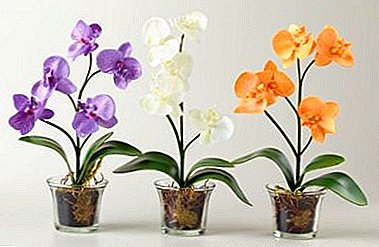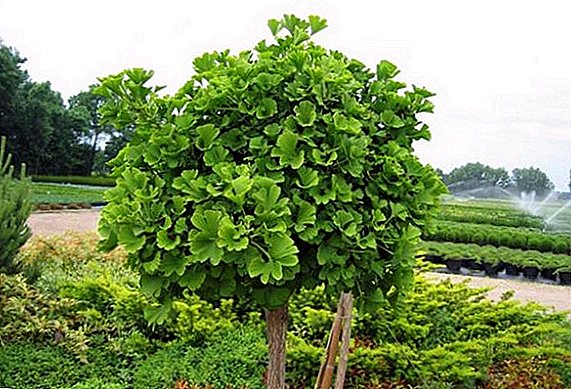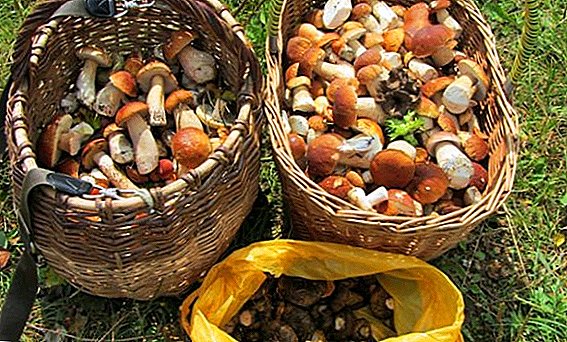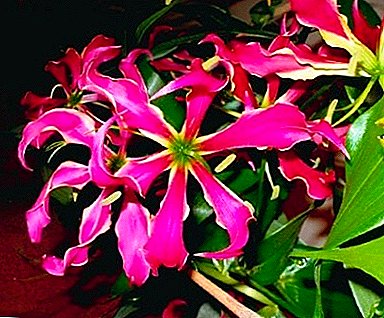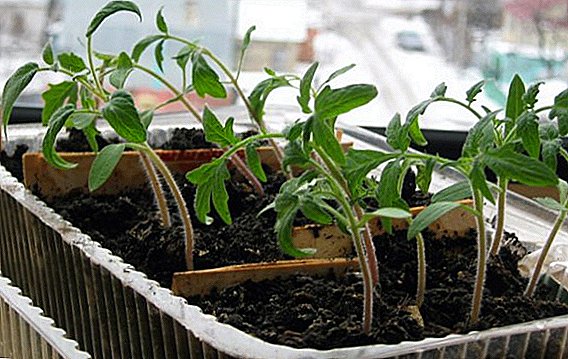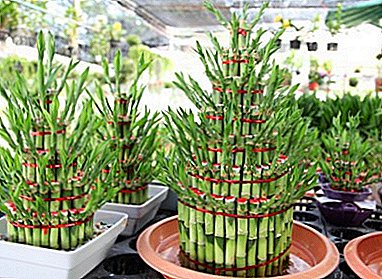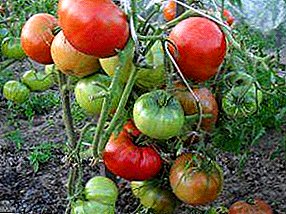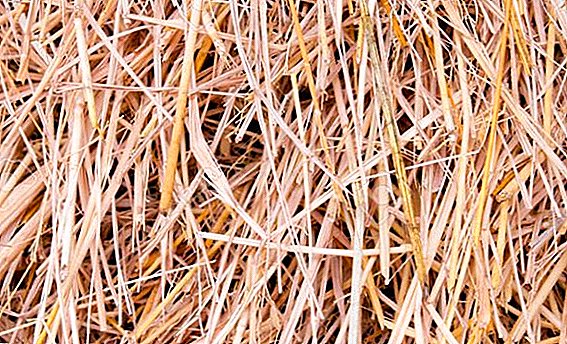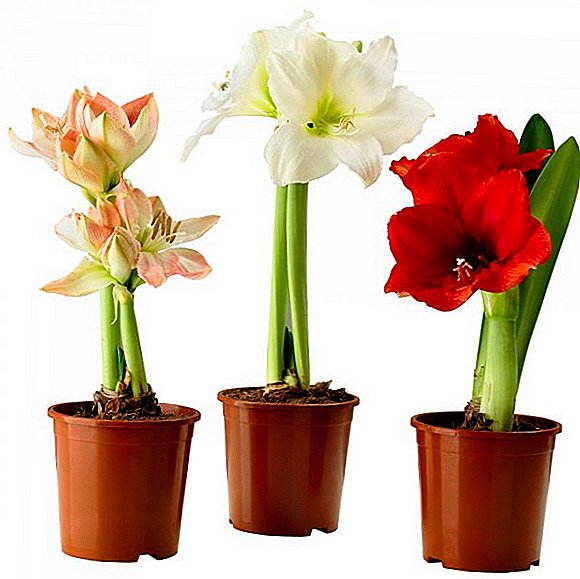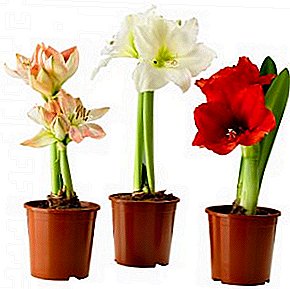 Amaryllis and hippeastrum bulbous houseplants are similar in appearance: on a high stem, large gramophone of bright colors. To distinguish the flowers and properly care for them, you need to know some of their features.
Amaryllis and hippeastrum bulbous houseplants are similar in appearance: on a high stem, large gramophone of bright colors. To distinguish the flowers and properly care for them, you need to know some of their features.
Description and comparison of plants
Both thermophilic indoor plants have a flowering phase and a dormant period. This almost ends the similarity of exotic flowers.
Did you know? The name Amaryllis is derived from the shepherdess, the heroine of the poem Virgil, from Greek means "sparkle".
Features of amaryllis
Amaryllis blooms once a year, in open ground, perhaps twice. Usually in August ─ early September. Flowers are collected in inflorescences of 6-12 gramophones with a delicate aroma. The color shifts from light bowl tones to dark ones on the edge. The stem is fleshy, juicy. Leaves absent.

Features hippeastrum
Hippeastrum flowers can be seen up to four times a year, depending on bulb size and care. A hollow, tall stem with 2-6 flowers having a diameter of 25 cm is surrounded by arrow-shaped leaves of dark green color. The smell is absent.

Difference between clans
Similar at first glance, indoor plants have a number of significant differences. Knowing the difference between each flower, it is impossible to confuse them.
In origin
Homeland Amaryllis ─ South Africa. The first mention of the flower dates back to 1737. In the catalogs of the time, flowers are called lilionarcissi. In nature, only one species is known ─ Amaryllis is beautiful, indoor flowers are cultivated ─ Belladonna. In 1821, the British poet and botanist William Herbert described the differences between the gippeastrum, identifying the origin of the African continent. The flower has more than 90 species of different colors: white, orange, pink, with contrasting stripes along the edges.
Important! Amaryllis is less common, on sale more common gippeastrum. Both flowers are the decoration of the collection of indoor plants.
In appearance
Different "appearance" of amaryllis and hippeastrum helps to distinguish plants at a glance:
- peduncle Hippeastrum is always surrounded by dense green leaves;
- Amaryllis has no leaves during flowering;
- in amaryllis inflorescence there are up to 12 gramophones, withering in a week;
- in hippeastrum ─ no more than 6 colors on the arrow, if you cut it and change the water daily, the flowers will stand for 10-12 days;
- Amaryllis blooms for 30-40 days, for Hippeastrum two months;
- smooth narrow leaves of amaryllis appear after flowering, serve to replenish the plant nutrients;
- Amaryllis bulb - pear-shaped, with husks. Under the scales are webs;
- in hippeastrum onion is rounded, slightly flat, with light scales without hairiness.
Difference in growth and flowering
Both plants breed onion, scales, babies and seeds.

Flowers have a rest period and a vegetative phase:
- in hippeastrum, the vegetative period begins at the end of winter and lasts until late autumn. If the flower has enough nutrients, the temperature in the room remains warm, the hippeastrum may not go to rest. To give it a rest, stop watering and placed in a cool room. Long arrowed leaves accompany the flowering time;
- Amaryllis dissolves bright inflorescence by the end of summer, the duration of flowering ─ up to one and a half months. Sometimes a flower growing on the open field pleases with beautiful buds twice a year. The leaves begin to grow only after the start of flowering, they serve as an additional source of nutrients.
Caring for plants at home
For self-cultivation, it is better to purchase an onion in a specialty store, in branded packaging. So you can avoid the mistake of confusing plants. Bulbs do not require tremendous care and maintenance. No exception ─ hippeastrum and amaryllis.

Growing Amaryllis
Planted onion immediately in a permanent pot. Soil is poured on two thirds of the onion, leaving part open. At a temperature of + 20 ... + 25 ° C in two years the plant will give the first inflorescences. Water the flower as it dries the earth, on the edge of the flowerpot, not on the onion. About the beginning of the vegetative period will warn the appearance of the arrow in the month of March.
It is necessary to stop watering until the arrow stretches to 10 cm. The vegetative period is over when the inflorescence dries and the leaves grow. No need to trim them. They conduct flower fertilizing, continue regular watering for two months, gradually increasing the pause between waterings. The plant leaves "to rest." At the end of February, the pot with the bulb is placed in a bright place at a temperature of + 25 ° C to awaken to the new vegetative phase.
Important! Replace perennial bulbous plants annually do not need.
Growing hippeastrum
The perennial hippeastrum will bloom in 6-8 weeks after planting in a pot with moist soil. Until the sprout appears, it is not necessary to water the plant. The main condition for good growth and rapid flowering: room temperature and bright room. The larger the bulb, the faster the flower "wakes up", and the more it will give inflorescences.

After the appearance of the arrow and leaves, to a height of 3-5 cm, the plant is poured over with water at room temperature, avoiding contact with the bulb. Every 14 days produce fertilizer fertilizer for flowering plants. At the end of the period, the peduncle and leaves are cut, continuing to feed for one and a half months, then the pot with the onion is taken out into a cool room.
Before a new vegetative period, the onion is transplanted to a different soil or the top layer of earth is changed in a pot, again taken out to a warm, well-lit room. If the “adult” bulb has given its children, they need to be planted, a flower resembling the mother flower will grow.
Important! Having correctly calculated the flowering period, they produce a distillation of beautiful bright inflorescences of hippeastrum by the chosen date: New Year, birthday, or jubilee.
Beautiful inflorescences of amaryllis and hippeastrum grown on their own, decorate the apartment, will be an original gift to relatives and friends for the solemn event.


